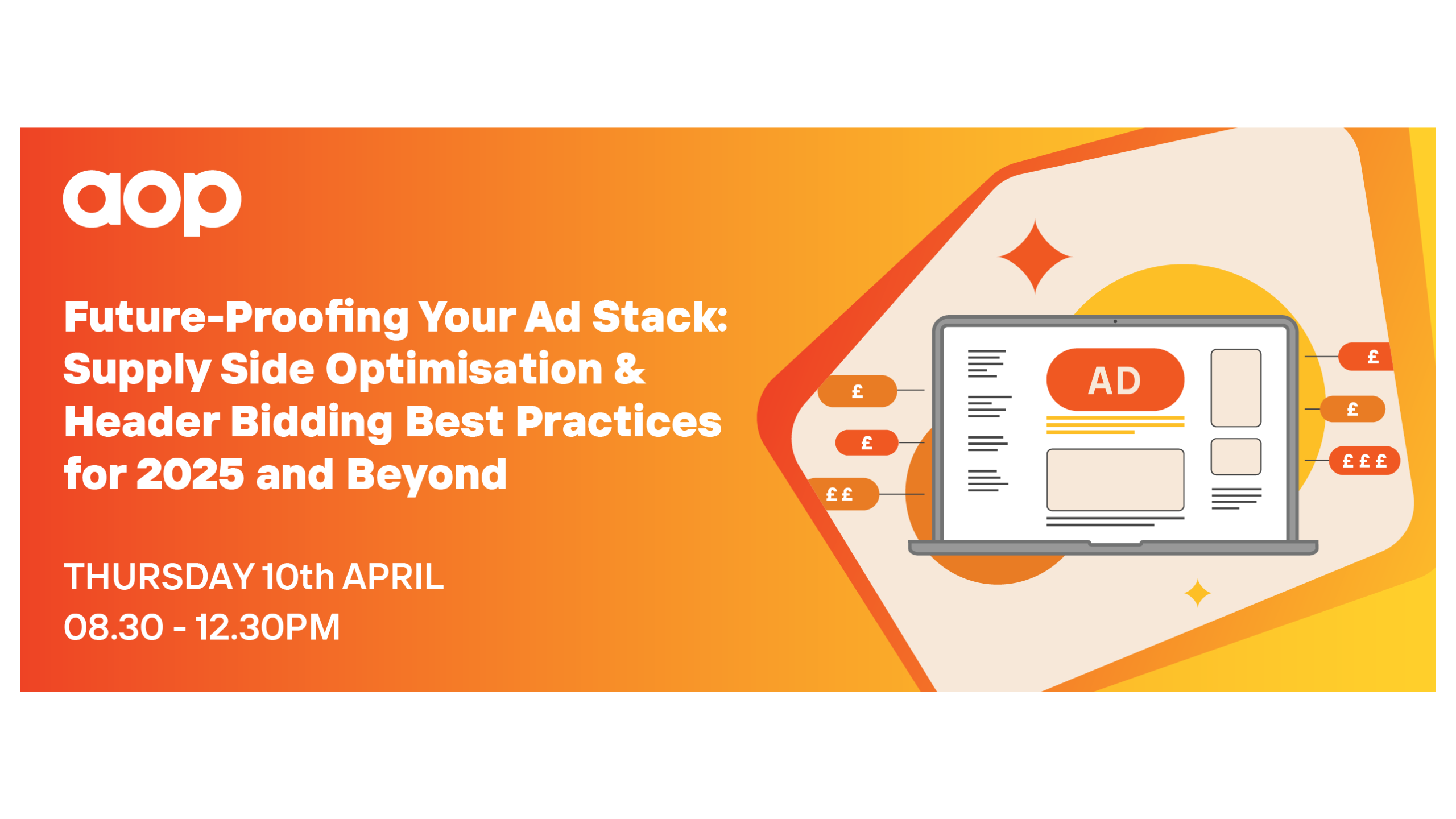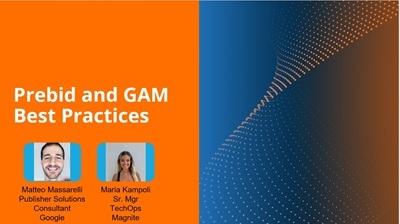Future-Proofing Your Ad Stack: Supply Side Optimisation & Header Bidding Best Practices for 2025 and Beyond
Date: 16 Apr 2025
Charlotte Street Hotel, London

Since the popularisation of header bidding in 2015, publishers had been fine-tuning their settings and partners to optimise their inventory. But header bidding technologies like Prebid and GAM evolved considerably over the last decade, prompting publishers to revisit their approaches to ensure they remained at the cutting edge of header bidding and supply side optimisation.
Attendees joined us in London to explore the pros and cons of strategies used by both the buy and sell side, as leading industry experts debated the current challenges in the industry. Alongside expert panels from AdTech and publishing brands, participants heard from Google’s Matteo Massarelli and Magnite’s Maria Kampoli, representing Prebid, on the latest technical enhancements in this space. They shared insights on how to get the best from GAM + Prebid. The event delved deep into technical topics, with attendees coming away with actionable strategies to test themselves or with partners on how to optimise for both page load and revenue—a must-attend for PMs, Tech Leads, and Programmatic Leads in the publishing AdTech ecosystem.
Bitesize
Here are just a few of the key highlights from the conversations:
- DSPs only deal with a fraction of QPS, as excessive query volume drives up costs and has a huge sustainability impact. Publishers must be more selective in their header auctions; paths to inventory should be in the hundreds, not thousands, and those who consolidate see the most success. For example, removing RESELLER lines from ads.txt will have a positive — or, at worst, neutral — impact for publishers.
- Buyers want as much data as possible — particularly where it aids addressability — and publishers should ensure the signals they can provide are replicated across all paths. Make sure you’re passing enough IDs for DSPs to value the inventory effectively. Popular IDs include GPID, Liveramp, UID2/EUID, and ID5.
- Supply path optimisation also affects sustainability, and brands are increasingly treating CO2 emissions as a KPI in their media plans. Publishers should track, prove, and promote their low-emission advertising offerings to ensure they are included in deals earmarked for green businesses.
- DSPs and SSPs are increasingly incorporating Ad Quality (e.g. clutter and page load) into their decisioning: SSPs are taking a stand against Made for Advertising (MFA) sites, while DSPs are advising buyers to purchase ads on sites with strong quality fundamentals through curated lists of “premium” publishers and placements.
- Don’t just look at supply chain and tech stack emissions: large advertisers are using UN Sustainable Development Goals to benchmark their own ESG efforts and those of their partners, providing a broader remit for publishers to secure a place on media plans, for example, the societal benefit of content produced.
- Prebid setups could be made more efficient, via three key optimisations: dynamic timeouts which can be set per slot, connection, and device type (the three second default is far too high); splitting bidders into primary and secondary groups depending on the revenue they provide, prioritising the former; and/or setting auctions to forcibly close after a certain number of bidders have responded.
- Google’s Single Request Architecture (SRA) improves performance by bundling all ad requests into one HTTP code (it needs to be enabled in both GAM and Prebid). The caveat is if one bidder is slow, the rest will be affected by that latency, so audit and monitor partners to ensure one bad apple doesn’t spoil the batch. You can also batch load SRA requests, for example, to prioritise above-the-fold ads, or give skins longer to load.
- When setting up GAM line-items, consider separating demand by value, for example, direct deals versus open auction. This encourages premium demand to compete more aggressively, gives publishers more control over auction dynamics, and isolates performance by demand type — which is difficult to determine if all are set to the same priority.
- Most importantly: audit, audit, audit. None of the above optimisations can be confirmed without some form of analytics or A/B testing in place to determine the best set up, which will vary from domain to domain, even page by page. You can download the Professor Prebid Chrome extension, or look at Sincera.io to get a view of you/your competitors top-line info. If you need further detail, use Prebid Analytics or chat with your Header Partner — or SSPs — to see what insights they are able to share.
Downloadable Presentations












